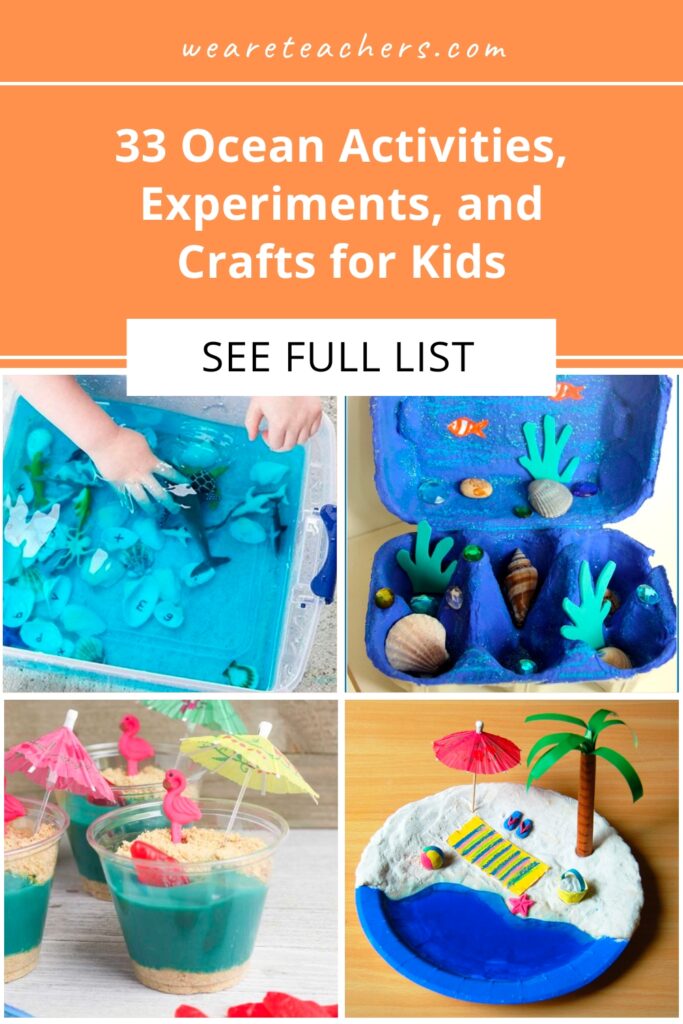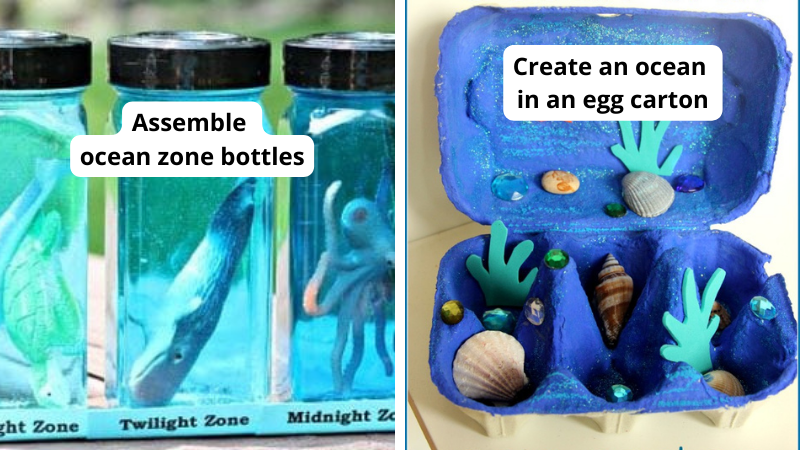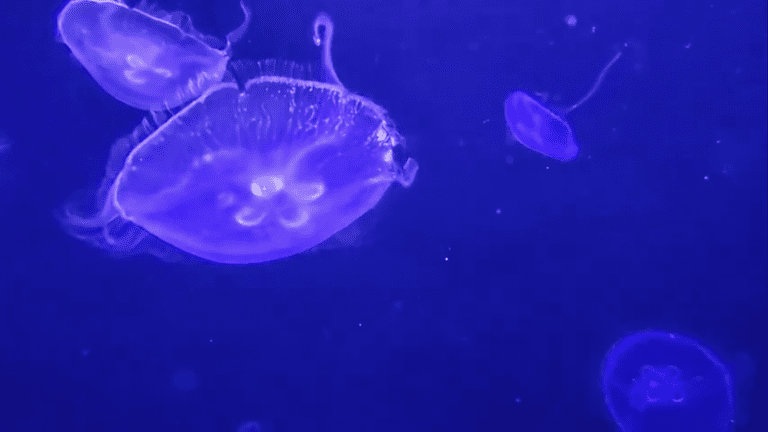Have you ever watched as a child stares into an aquarium with awe? Whether it is the song “Baby Beluga” or the movie Finding Nemo, kids love all things ocean! So you know they’ll be eager to dive into this collection of ocean activities. Whether it is a science experiment to see how fish breathe underwater, an art lesson where students create their own underwater scene, or a writing prompt about the ocean, students will learn all about our watery planet. Come on in … the water’s fine!
1. Read an ocean book
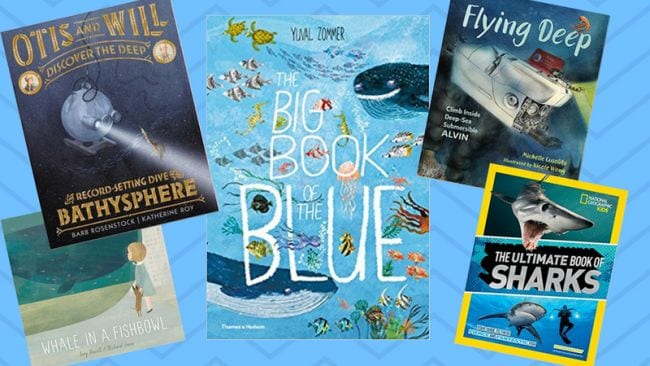
Whether you’re looking for picture books or chapter books, fiction or nonfiction, our list of terrific ocean books has got you covered.
2. Make an ocean in a bottle
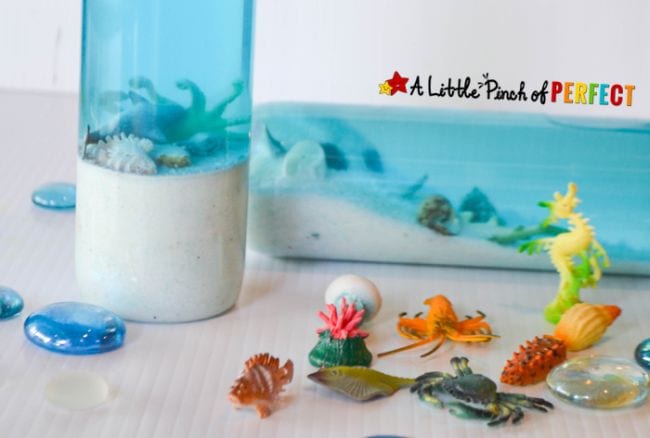
Turn an old water bottle into a mini-aquarium. Sand, shells, and plastic sea creatures bring the ocean to you anytime.
Learn more: A Little Pinch of Perfect/Ocean in a Bottle
[contextly_auto_sidebar]
3. Dive into an ocean-themed sensory bin
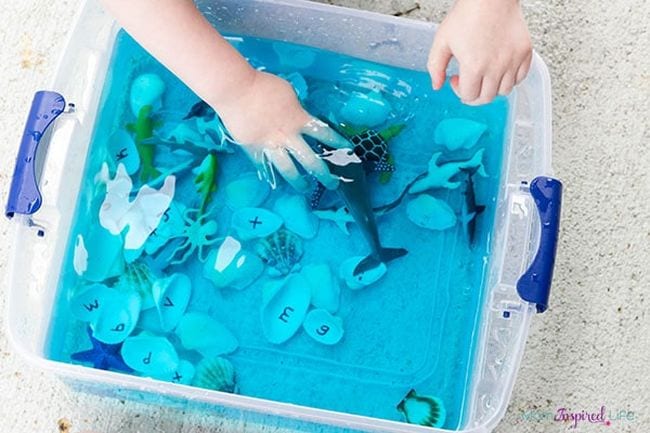
Round up shells, toy sea animals, and maybe even a boat or two, then drop them into a bin of water. Every kid will enjoy splashing around while they learn!
Learn more: Fun Learning for Kids
4. Take a virtual aquarium field trip
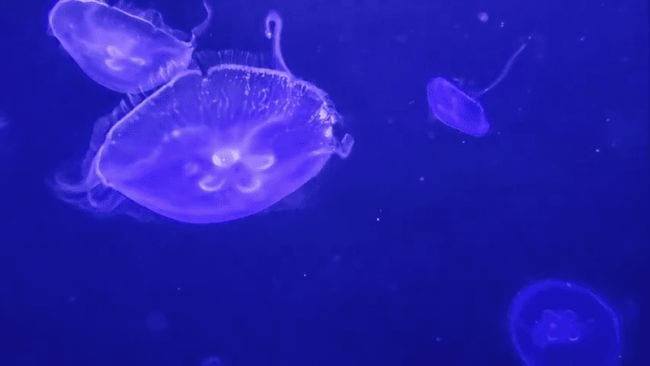
Can’t get to the aquarium? No problem! Take a virtual field trip instead with live webcams and video tours. See our list of virtual aquarium trips here.
5. Create an ocean in an egg carton
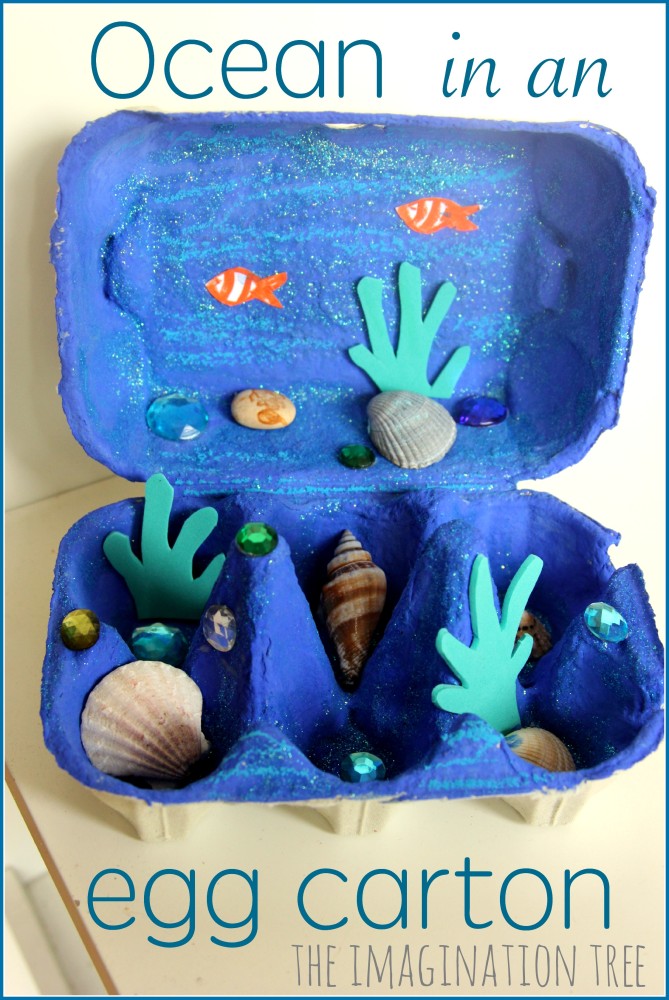
Ask your friends and family to save their egg cartons in the weeks before you plan on doing this project. Once ready, have your students paint their cartons. Finally, have them decorate their scenes using a variety of underwater objects and stickers.
Learn more: The Imagination Tree
6. Check out the Smithsonian’s Ocean site
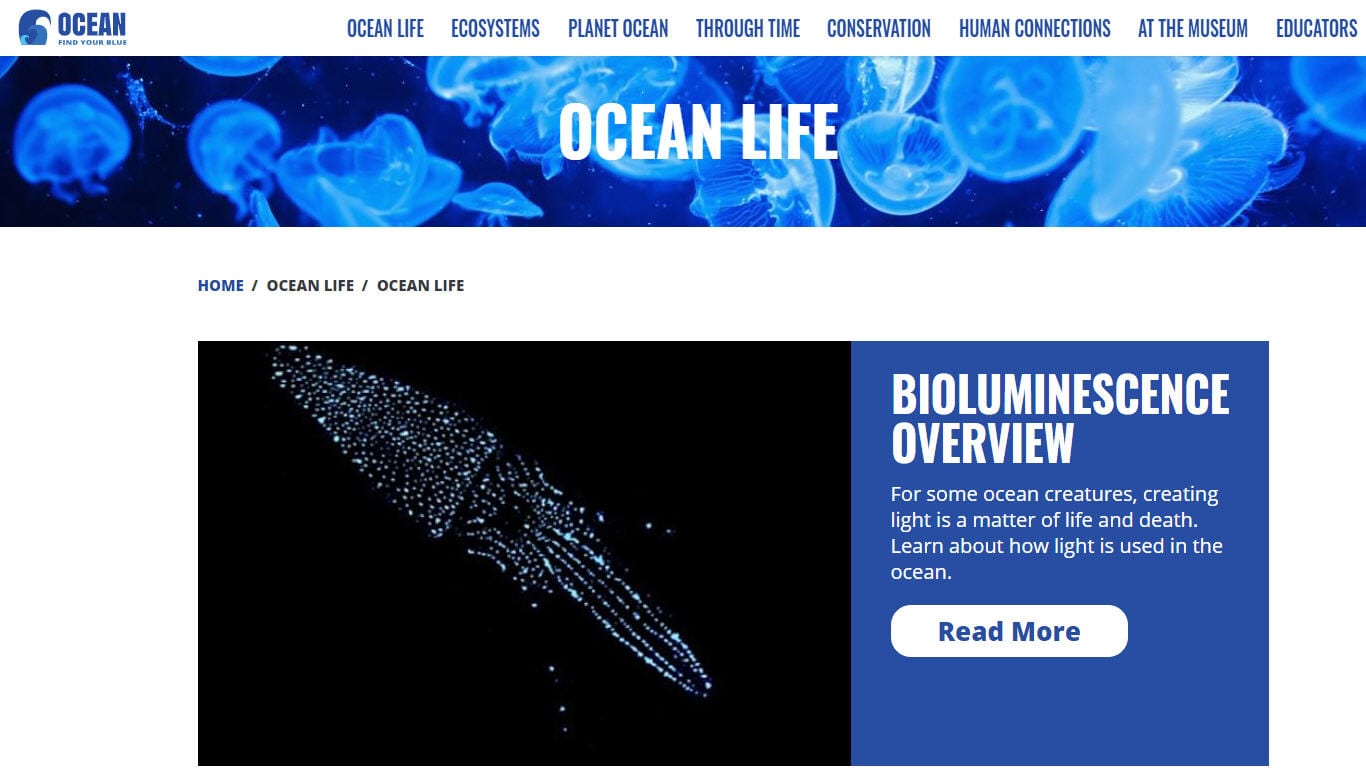
Just as you’d expect from the Smithsonian, this website is full of information, photos, and more ocean activities. You’ll even find free lesson plans for teachers—score!
Learn more: Smithsonian Ocean
7. Assemble ocean zone bottles
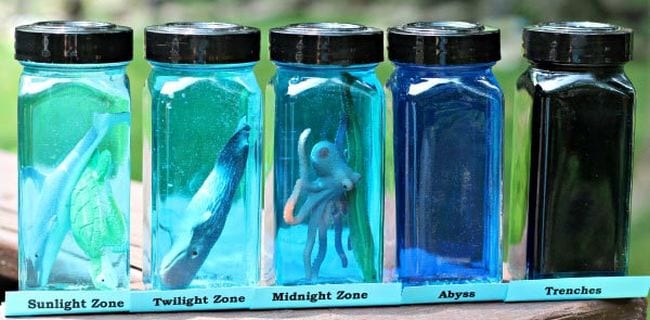
Learn the zones of the ocean with these clever bottles. Simply use food coloring to dye the water deeper shades of blue to represent the amount of sunlight that reaches each zone, then add a representative sea animal toy.
Learn more: Edventures With Kids
8. Turn paint strips into ocean layers
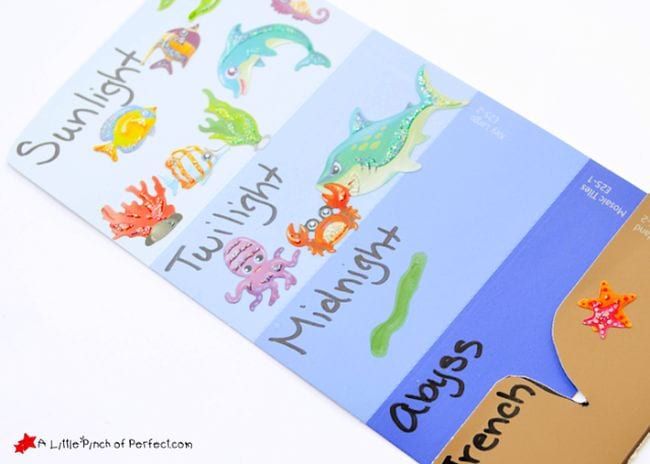
Grab some blue paint sample strips and label them to represent the ocean layers. Then add stickers or drawings of corresponding animals to each layer.
Learn more: A Little Pinch of Perfect/Ocean Zones Crafts
9. Study how fish breathe underwater
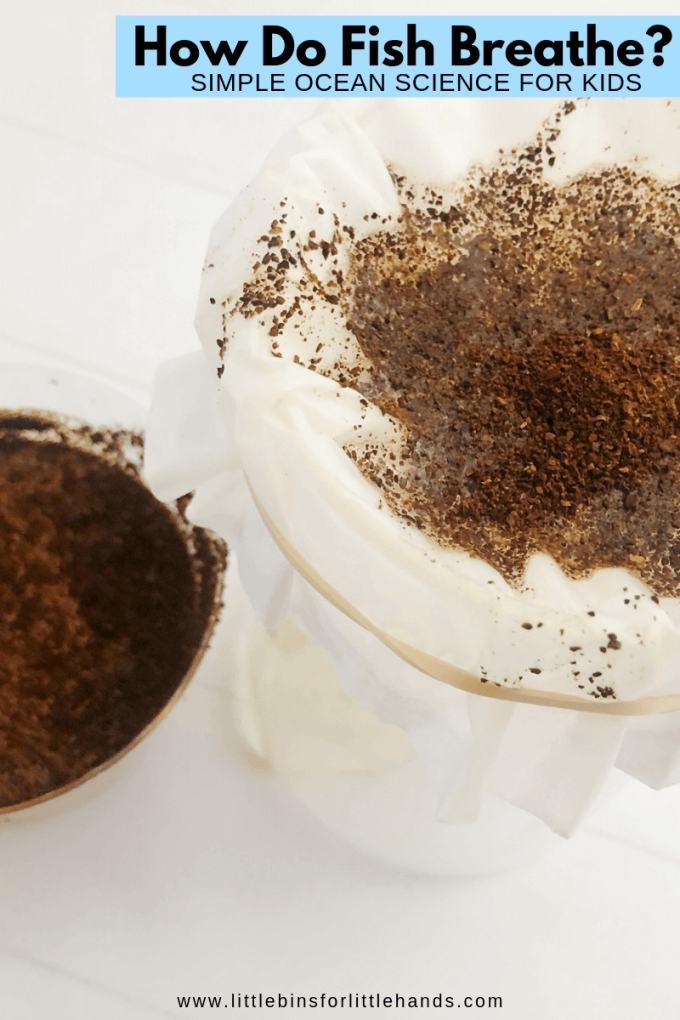
This simple science experiment will help kids better understand how fish breathe underwater. Before beginning, pick your students’ brains to see what they already know or suspect about how fish breathe.
Learn more: Little Bins for Little Hands
10. Upcycle an ocean zones craft
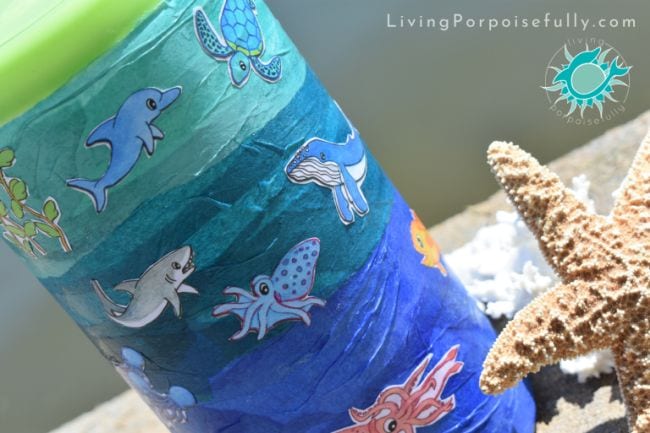
Here’s one more way to learn about the layers of the ocean. Use crepe paper to upcycle a plastic container, then get free printables at the link to add to your creation.
Learn more: Living Porpoisefully
11. Watch an ocean documentary
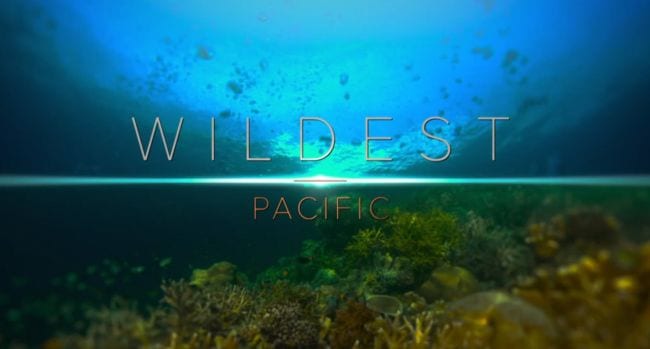
Every streaming service is loaded with nature documentaries. Disney+ has an especially robust collection that’s perfect for kids. On Amazon, try Wildest Places or Ocean Mysteries. Netflix’s new Our Planet series has episodes on coastal seas and high seas.
12. Peruse the Marine Life Encyclopedia
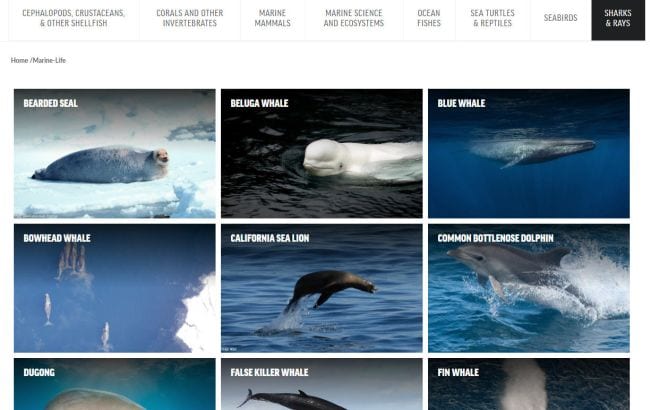
Looking for online ocean activities? Try the Marine Life Encyclopedia. Kids will get in-depth information about all their favorite sea creatures, from sharks to otters.
Learn more: Marine Life Encyclopedia
13. Assign an ocean-themed writing prompt
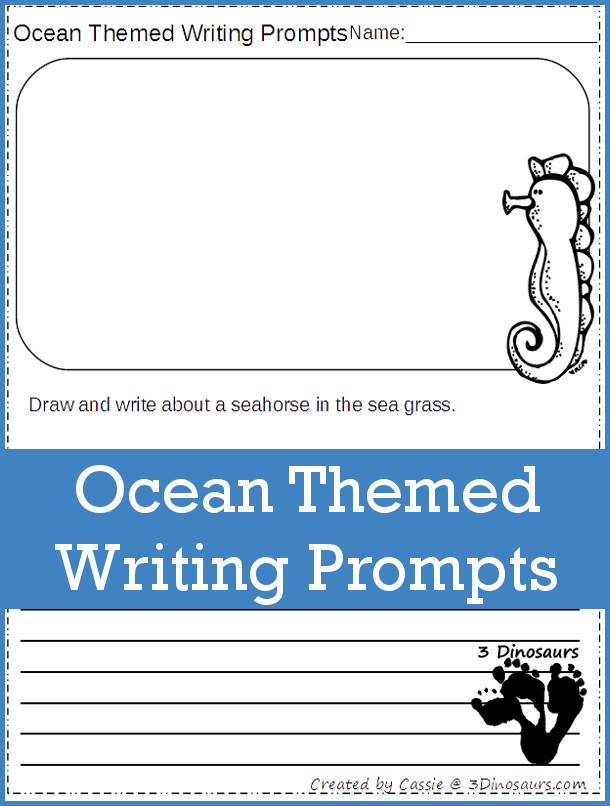
Pair this ELA lesson with a science lesson on ocean life.
Learn more: 3 Dinosaurs
14. Learn how ocean currents work
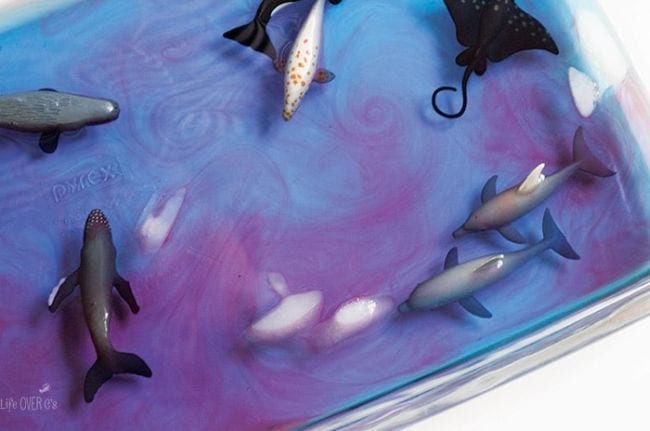
This cool demo uses hot and cold water mixed with a little food coloring to demonstrate how ocean currents form. (The plastic sea animals are just for fun!)
Learn more: Life Over Cs
15. See ocean waves in action
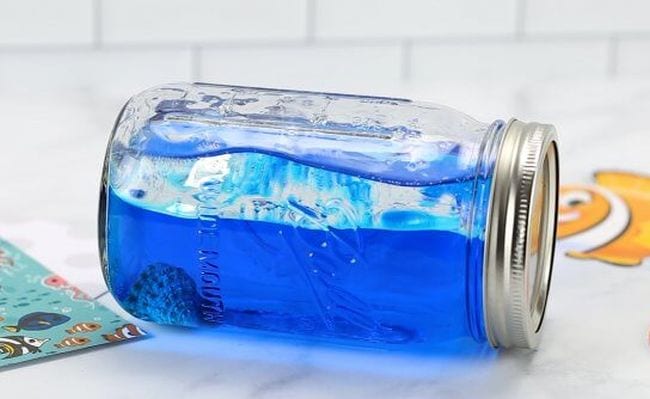
A layer of oil floating on the water helps make wave action more obvious. You can do ocean activities like this one in person or as an online demo.
Learn more: Little Bins for Little Hands/Ocean Waves
16. Explore saltwater density
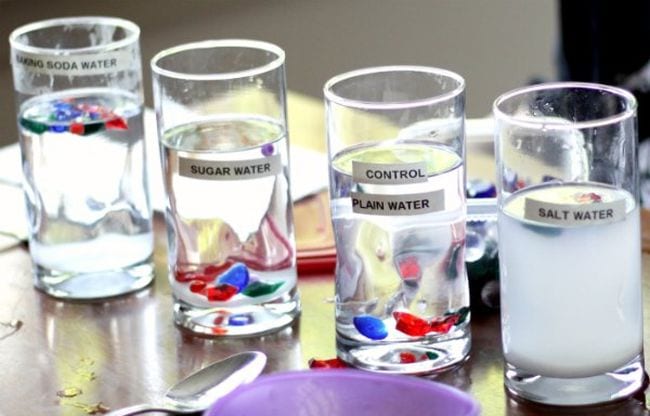
Kids may be surprised to learn that it’s actually easier to float in salt water than fresh water. This experiment proves it!
Learn more: Science Kiddo
17. Fish for numbers

This fun activity works equally well for little ones who are working on number recognition and slightly older students who are already working on addition. It will require a little bit of preparation on your end, but the end result is so fun!
Learn more: Buggy and Buddy
18. Dive and Discover
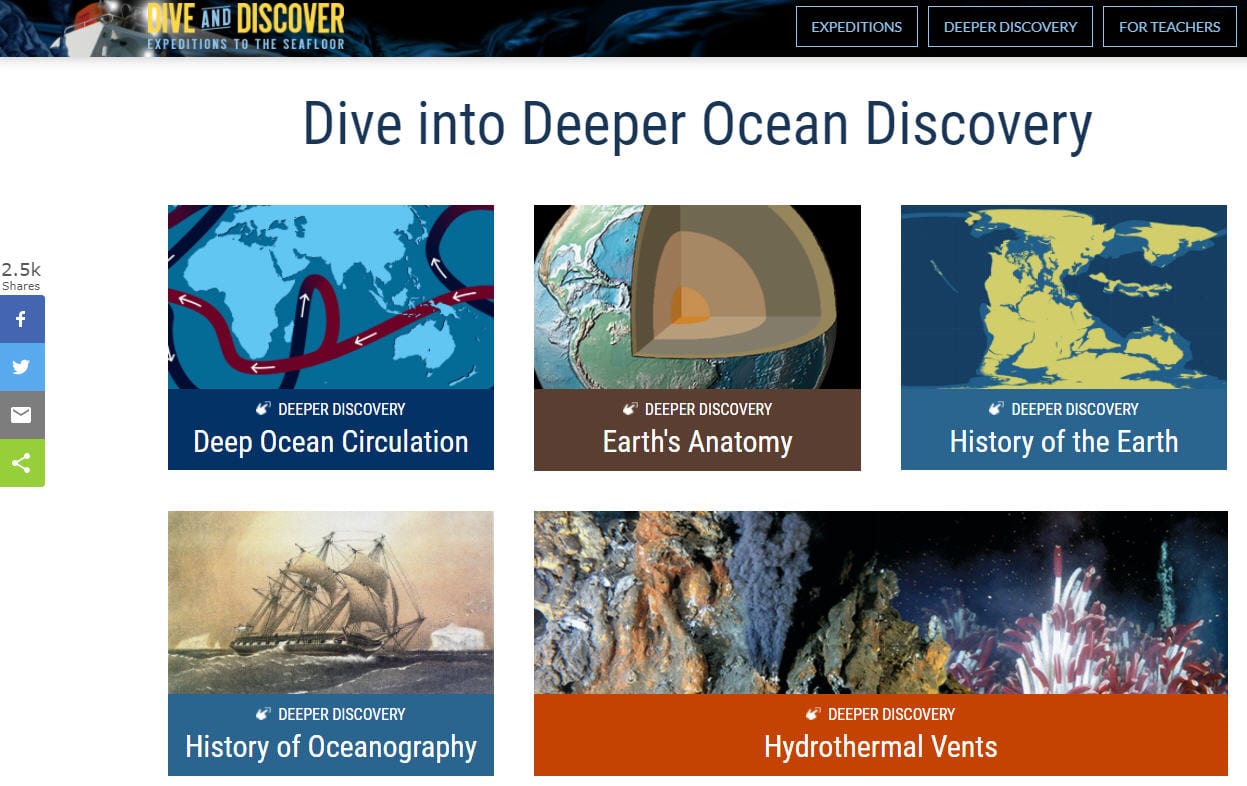
Here’s another website full of online ocean activities. It simulates the thrill of joining actual underwater explorations, from coral reefs to deep-sea trenches.
Learn more: Dive and Discover
19. Put together an ocean animal notebook
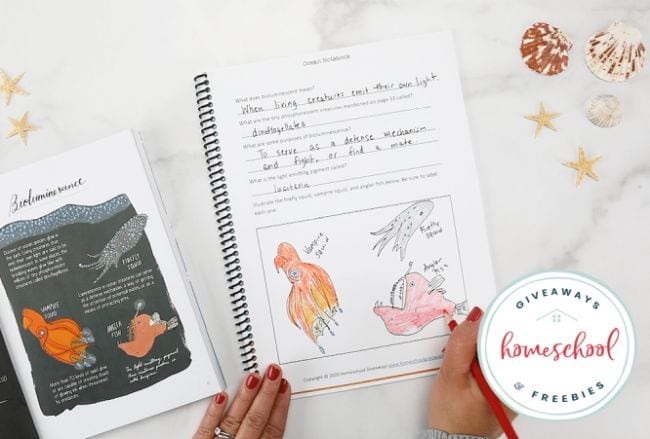
Want to explore a wide variety of sea animals? Then grab this free printable 60-page notebook. Each page includes space for kids to fill in the information and add their own illustrations.
Learn more: Homeschool Giveaways
20. Do an ocean animal research project
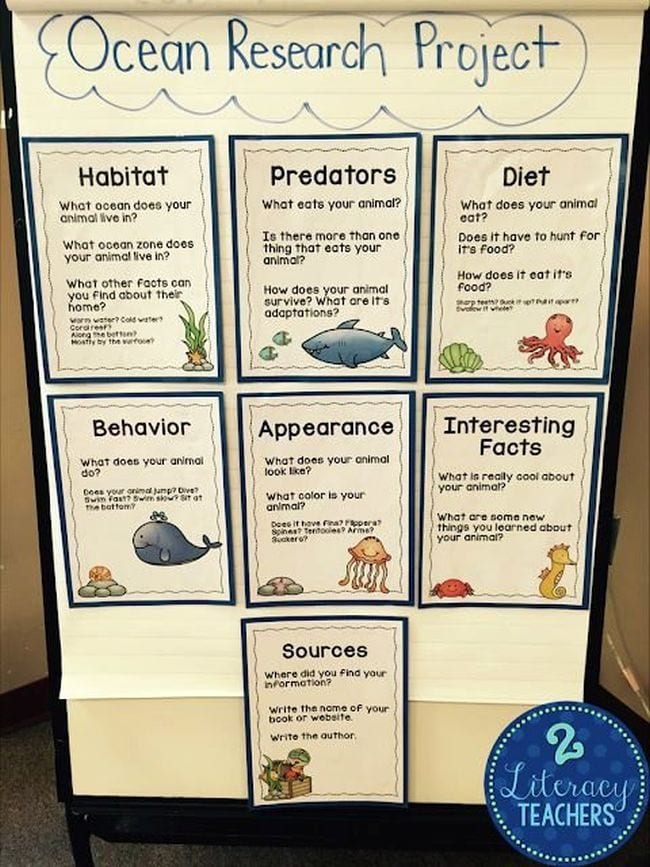
Here’s another way to explore sea creatures. Each student chooses their own favorite, then dives deep to learn all about it. Have kids give a presentation, design a slideshow, or even make their own documentary!
Learn more: 2 Literacy Teachers
21. Create an underwater scene using chalk and tempera paint
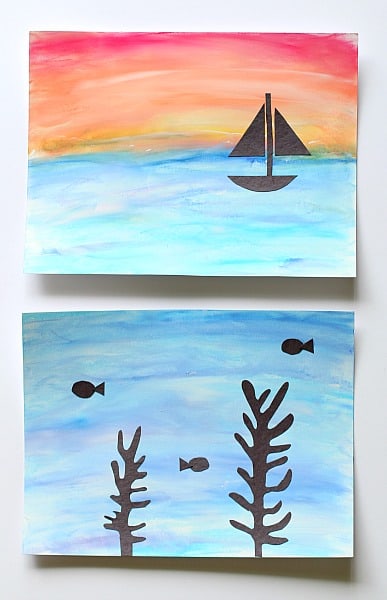
We love that this art project shows students a different way of using both paint and chalk or pastels. Begin by creating the sunset or ocean water with chalk or pastels, then dip your finger in white tempera paint and watch as the color spreads. Finally, cut out ocean animals, coral reefs, or boats to add to your scene.
Learn more: Buggy and Buddy
22. Transform eggs into sea creatures

How adorable are these? They were made using wooden eggs, but plastic ones would work well too.
Learn more: Craft Play Learn
23. Build LEGO sea creatures
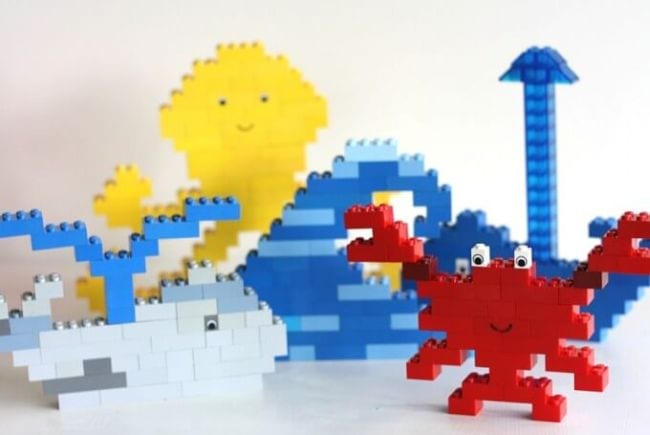
Pull out the tub of LEGO bricks and set kids free to create! Show them these pics for inspiration, then see what they can come up with on their own.
Learn more: Little Bins for Little Hands/LEGO Sea Creatures
24. Use a fork to paint a puffer fish
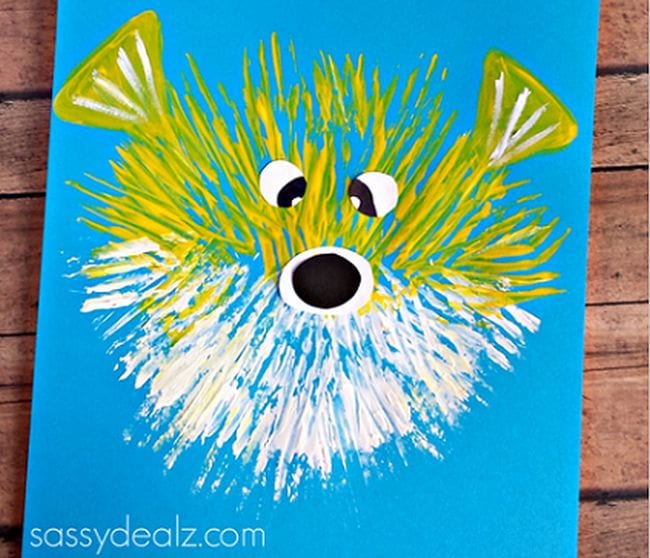
You’ll be surprised at how easy this impressive painting is to create. Pick up a bag of disposable forks and get ready for undersea fun!
Learn more: Crafty Morning
25. Paint a coral reef with sponges
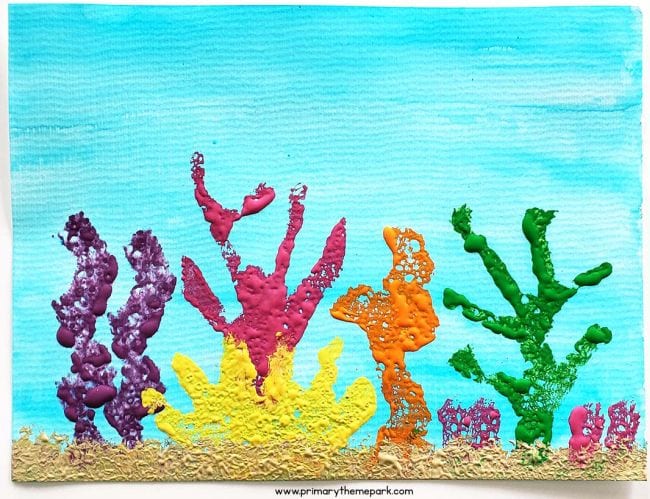
Here’s another surprisingly easy ocean craft for kids. Cut disposable sponges into coral shapes, then stamp an underwater scene.
Learn more: Primary Theme Park
26. Make a tasty ocean-themed snack
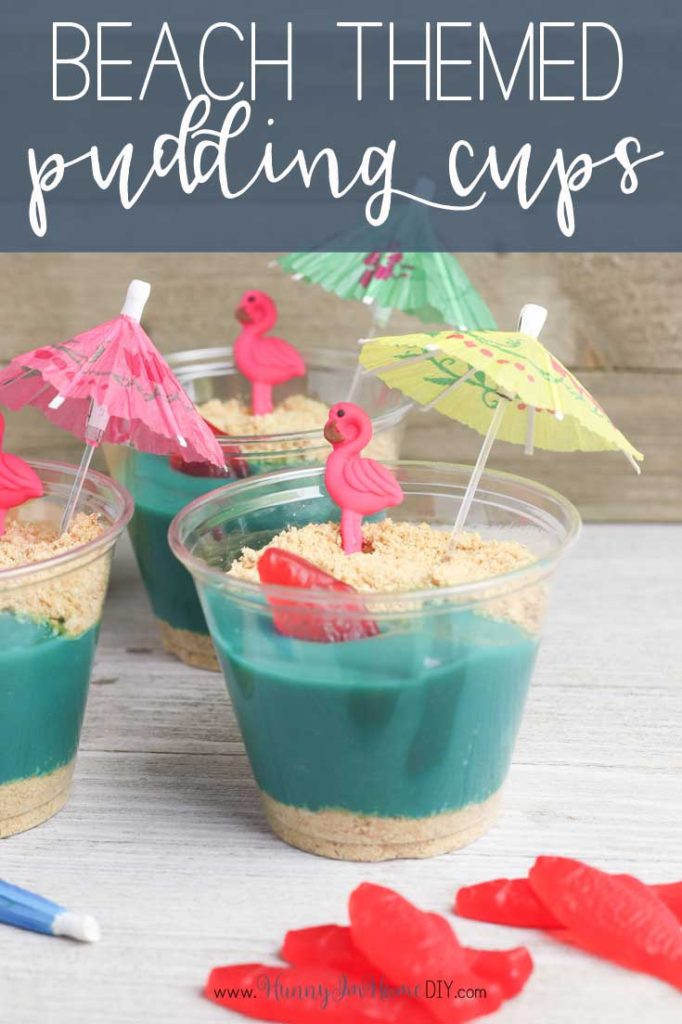
If allergies aren’t a concern, you can whip up these adorable snacks for your students. If allergies are a concern, you can always send the recipe home. Vanilla pudding dyed blue makes for perfect water, and graham cracker crumbs are the perfect stand-in for sand. Add some Swedish Fish and a little umbrella for good measure!
Learn more: Hunny I’m Home
27. Sculpt sea stars from salt dough
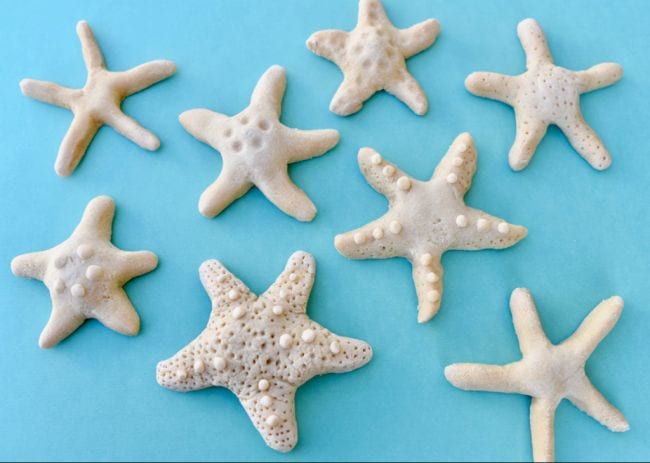
Starfish, more properly known as “sea stars,” come in a wide variety of sizes and designs. Have kids sculpt their own from salt dough or Play-Doh.
Learn more: Crafting Chicks
28. Craft a whale from a paper plate
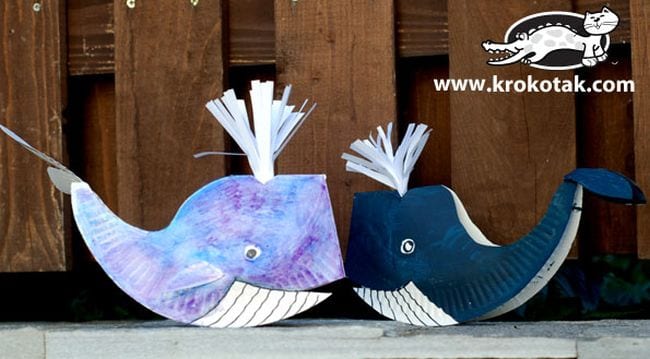
No whale craft is complete without a spout of water from the blowhole! All you need is a pack of paper plates to get started.
Learn more: Krokotak
29. Draw a life-size whale
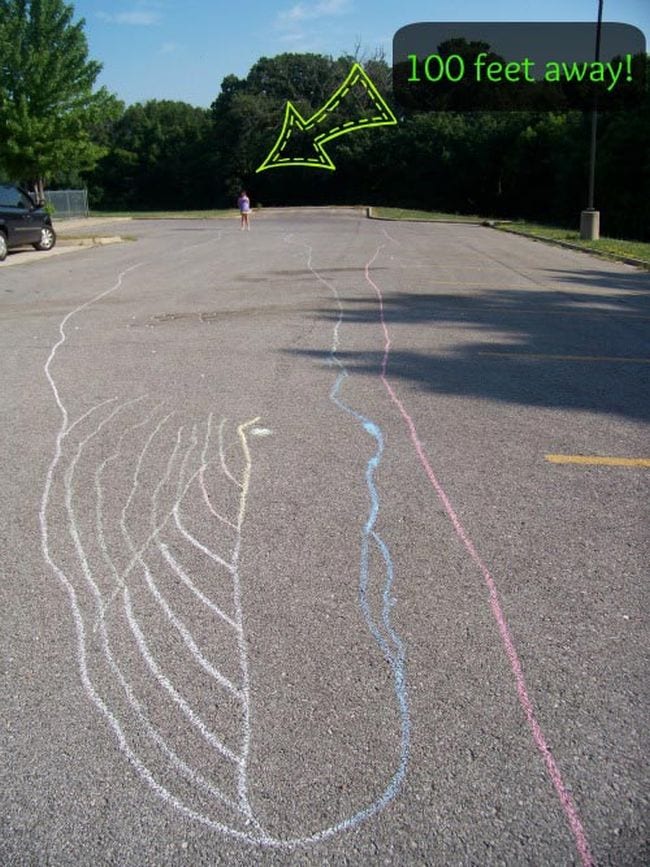
Did you know that blue whales are the largest creature ever to have lived on Earth? They’re even bigger than dinosaurs! Head to the playground with some sidewalk chalk and a tape measure to see if you can draw a life-size blue whale model.
Learn more: Edventures With Kids
30. Create a colorful seahorse
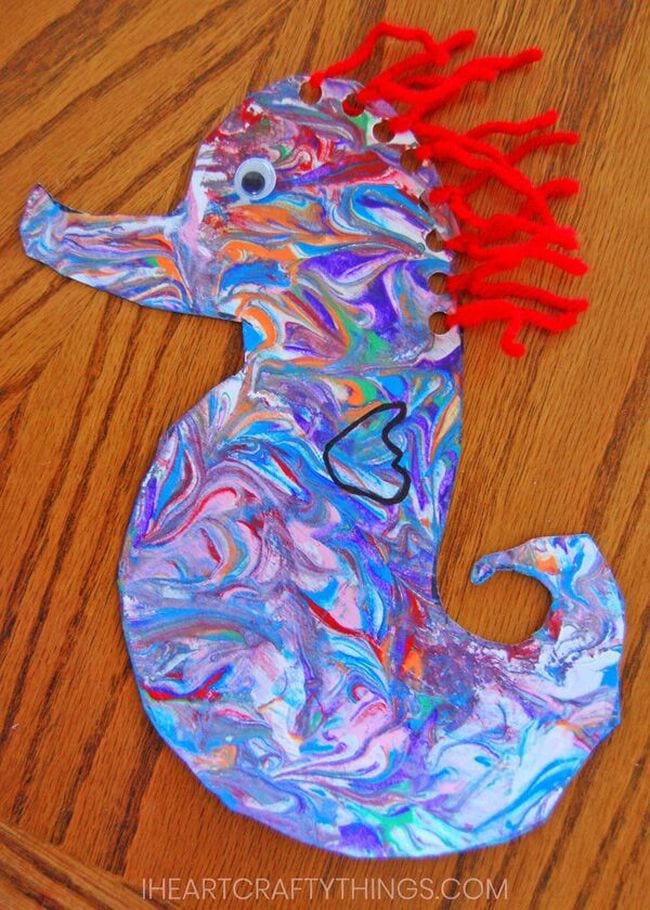
The secret to this cool marbleized pattern? Shaving cream! This is one technique that never fails to impress.
Learn more: I Heart Crafty Things
31. Create a beach scene
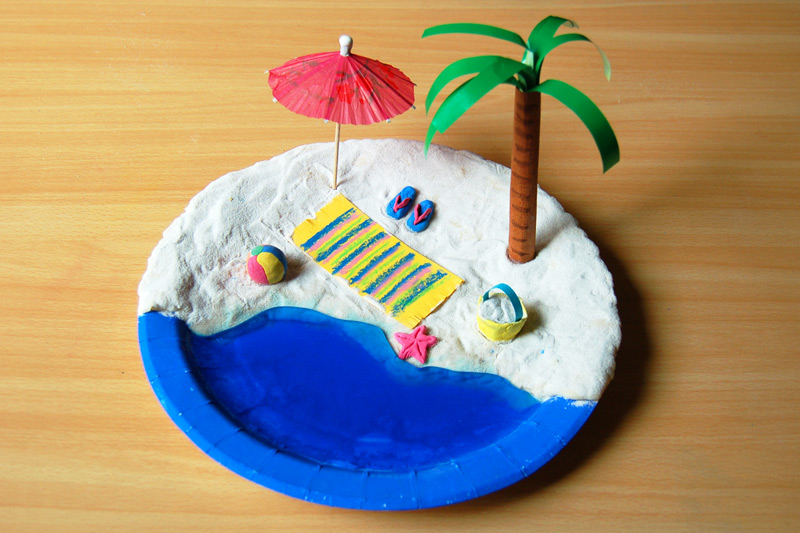
Kids will definitely love personalizing their beach scenes. You can use air-dry clay or salt dough to create the sand side of your ocean scene.
Learn more: First Palette
32. Hang suncatcher jellyfish
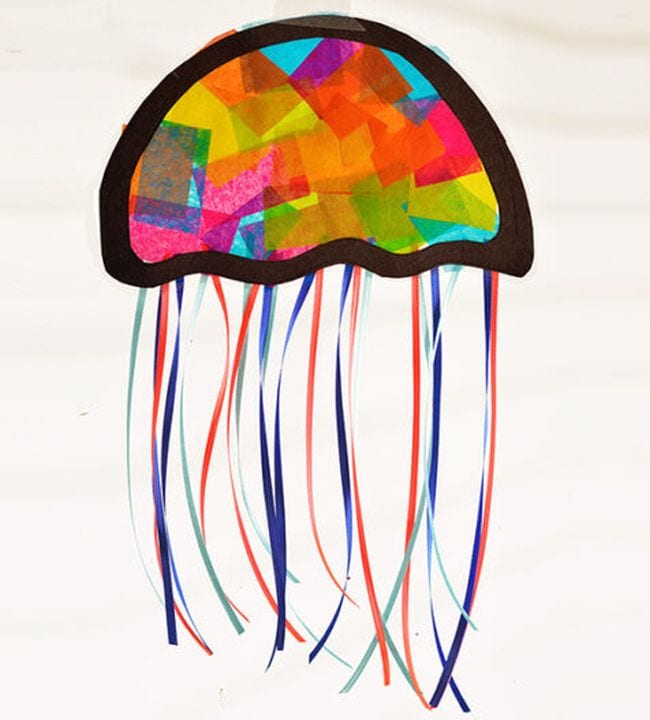
Re-create the translucent bell of a jellyfish with tissue paper, then hang ribbon tentacles for a pretty ocean craft you’ll love to display.
Learn more: I Heart Arts ’n Crafts
33. Make a cereal box aquarium
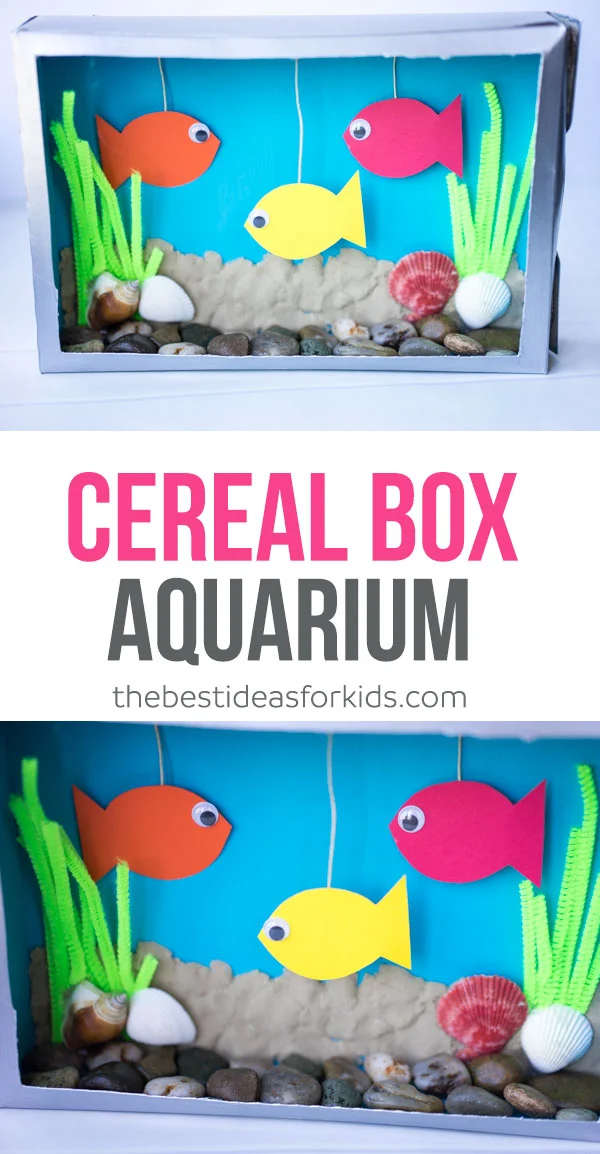
We love that this craft encourages reusing rather than throwing away since kids will be upcycling their favorite cereal’s box. Be sure to provide kids with plenty of variety in stones, colored card stock, etc., so they can really personalize their aquariums.
Learn more: The Best Ideas for Kids
If you enjoy these ocean activities, check out 20 Wild Ways To Explore Animal Habitats With Kids.
Plus, 16 of Our Favorite National Geographic Activities Kids Can Do at Home.
